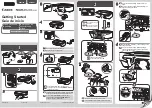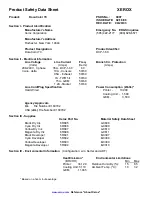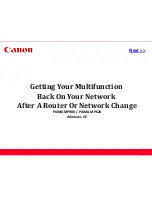
151
SEP 2004
Ver. 1.2
DP-1520P/1820P/1820E
5.
Managing Network Route Tables
In the simplest case a router connects two network segments. In this model, the system used to join
the two segments needs to know only about these segments.
The routing table for router R1 in this case is simple; the following table shows its key routes:
When the Unit at 192.168.3.5 attempts to communicate with the Unit at 192.168.1.x, IP performs the
ANDing process to find two things: The local network ID is 192.168.3.0, and the destination network ID
is not. This means, that the destination host is not on the local network.
IP, is responsible to find a route to the remote network, and therefore, it consults the routing table.
Here, the local host normally determines that the next step in the route is the Default Gateway, and
sends the packet to router R1.
The router R1, receives the packet. After determining that the packet is for another host and not the
router itself, it checks the routing table. It finds the route to 192.168.1.0 and sends the packet through
the interface to the Unit at 192.168.1.x, which receives the packet. This is a simple route that took
only a single hop.
When another network is added as the number of hosts grows, it gets complicated, and the systems on
the most distant networks cannot communicate. When the router receives a packet in this case, it
cannot find a route to the remote network. It then discards the packet and a message indicating
"destination host unreachable" is sent to the originator.
Here, is where the ROUTE command-line utility is useful when dealing with more than two networks,
and is used by Administrators to statically manage a route table by adding, deleting, changing and
clearing the route table. It has a number of options that are used to manipulate the routing tables,
some are shown below:
• MASK
If this switch is present, the next parameter is interpreted as the netmask parameter.
• Netmask
If included, specifies a sub-net mask value to be associated with this route entry. If not specified, it
defaults to 255.255.255.255.
• Gateway
Specifies the gateway.
• METRIC
Specifies the metric / cost for the destination.
All symbolic names used for the destination are looked up in the network database file NETWORKS.
The symbolic names for the gateway are looked up the host name database file HOSTS.
Network Address
Netmask
Gateway
Interface
192.168.3.0
255.255.255.0
192.168.3.254
192.168.3.254
192.168.1.0
255.255.255.0
192.168.1.253
192.168.1.253
Summary of Contents for Workio DP-1820P
Page 98: ...98 SEP 2004 Ver 1 2 DP 1520P 1820P 1820E DETAIL A 28 35 31 32 33 34 30 29 ...
Page 464: ...464 SEP 2004 Ver 1 2 DP 1520P 1820P 1820E memo ...
Page 495: ...memo ...
Page 496: ...DZZSM00257 ...
















































